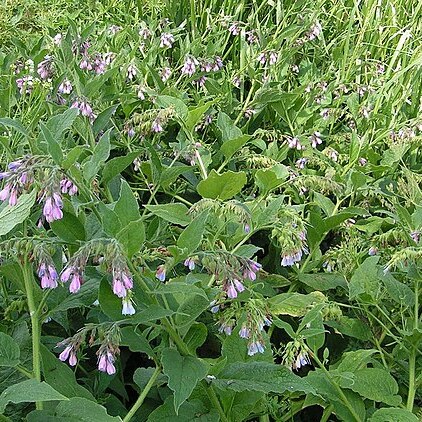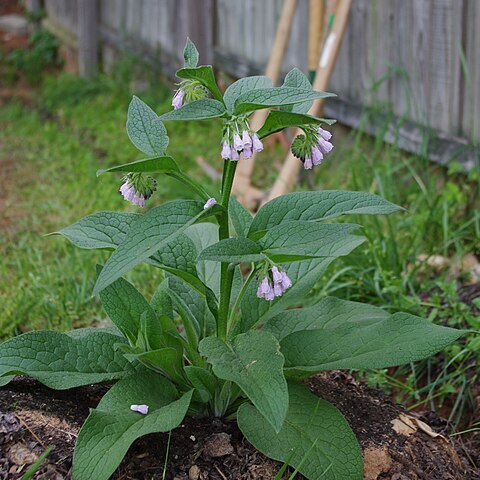Herbs perennial. Roots thickened, hispid or strigose. Stem leaves sometimes decurrent. Cymes terminal, becoming paniculate, bracteate. Calyx 5-parted to middle or below; lobes unequal, slightly elongated in fruit. Corolla light purple-red, rarely yellow, tubular-campanulate; throat appendages 5, lanceolate, with papillate glands; limb 5-lobed; lobes triangular to semiorbicular, margin dentate, apex sometimes revolute. Stamens inserted at throat, not exserted; anthers linear-oblong. Ovary 4-parted. Style filiform, usually exserted; stigma capitate. Gynobase flat. Nutlets ovoid, sometimes suboblique, usually granular-tuberculate, reticulate-wrinkled, rarely smooth; attachment scar at base, cupular, finely dentate at margin.
Cor tubular-campanulate, the well defined tube much longer than the short, erect or apically spreading lobes; fornices narrow and elongate, erect; filaments inserted at the level of the fornices; anthers included; style elongate, shortly exserted; nutlets incurved, ventrally keeled, with a stipe-like basal attachment that fits into the otherwise flattish receptacle, the basal margin of the nutlet forming a prominent, toothed rim; broad-lvd perennials with nodding, white or ochroleucous to pink or blue fls in several or many small, sympodial, naked modified cymes. 25, Europe and Medit. reg.
Perennial, usually hispid herbs. Basal lvs with petiole long and welldefined; cauline Ivs sometimes sessile. Infl. of short, ebracteate terminal cymes. Calyx 5-lobed, often divided nearly to base, accrescent. Corolla tube cylindric in lower 1/2, tubular-campanulate or funnelform above; limb of 5 short lobes; scales present, usually with papillate margins. Stamens included, inserted around middle of tube. Style exserted; stigma very small. Nutlets ovoid, erect or curved, usually rugose or verruculose, occasionally smooth; base concave with thickened collar.


